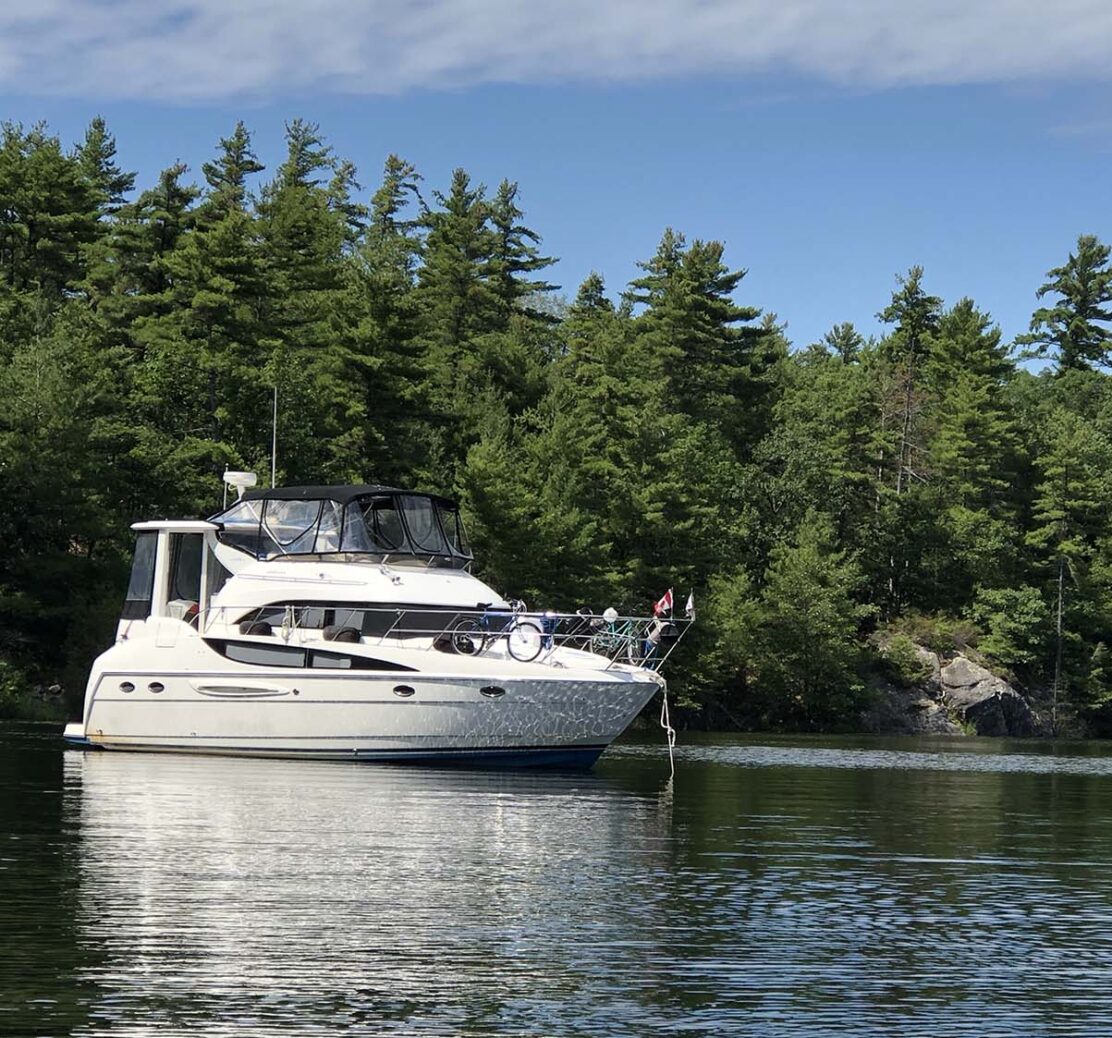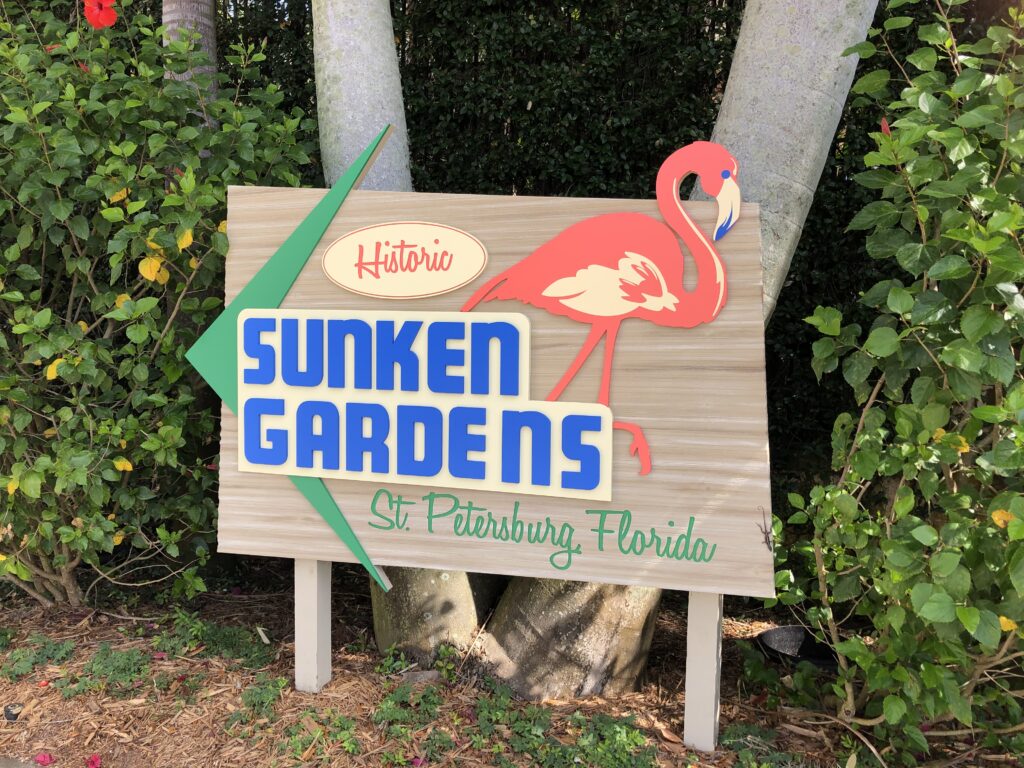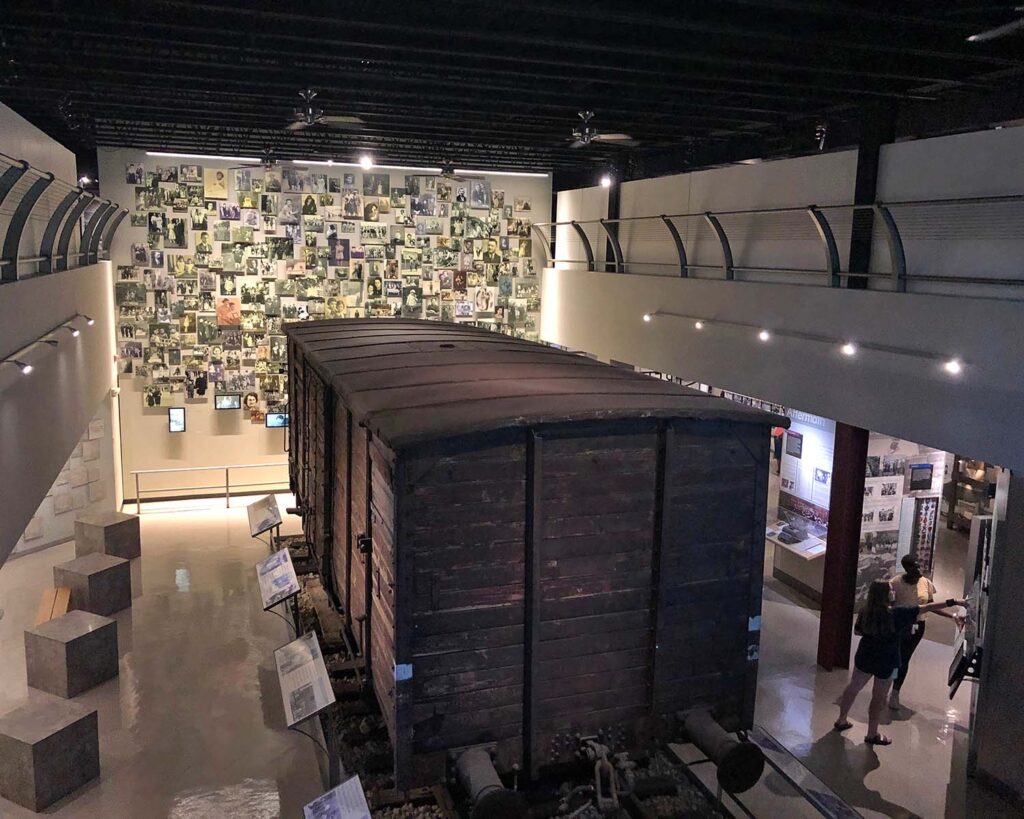We left Clearwater on a sunny morning with wispy clouds and moderate winds. We weren’t quite as concerned about winds as we were traveling in the Gulf Intracoastal Waterway (GICW), which would have land on both sides of us to give us a wind buffer. We headed towards St. Petersburg, FL. We traveled the 36 miles in about 4.5 hours and settled into the St Petersburg City Marina. We were adjacent to town, so off we went. We wove our way around the construction, in progress on the street coming out of the marina, and found “town,” which was very nice and very busy. Again, some great architecture, lots of palm trees, and lots of shops and restaurants. At the Visitors’ Center we got some info on places to see and got the map for a local free trolley which we got on just to get the “lay of the land” and see what we could see!
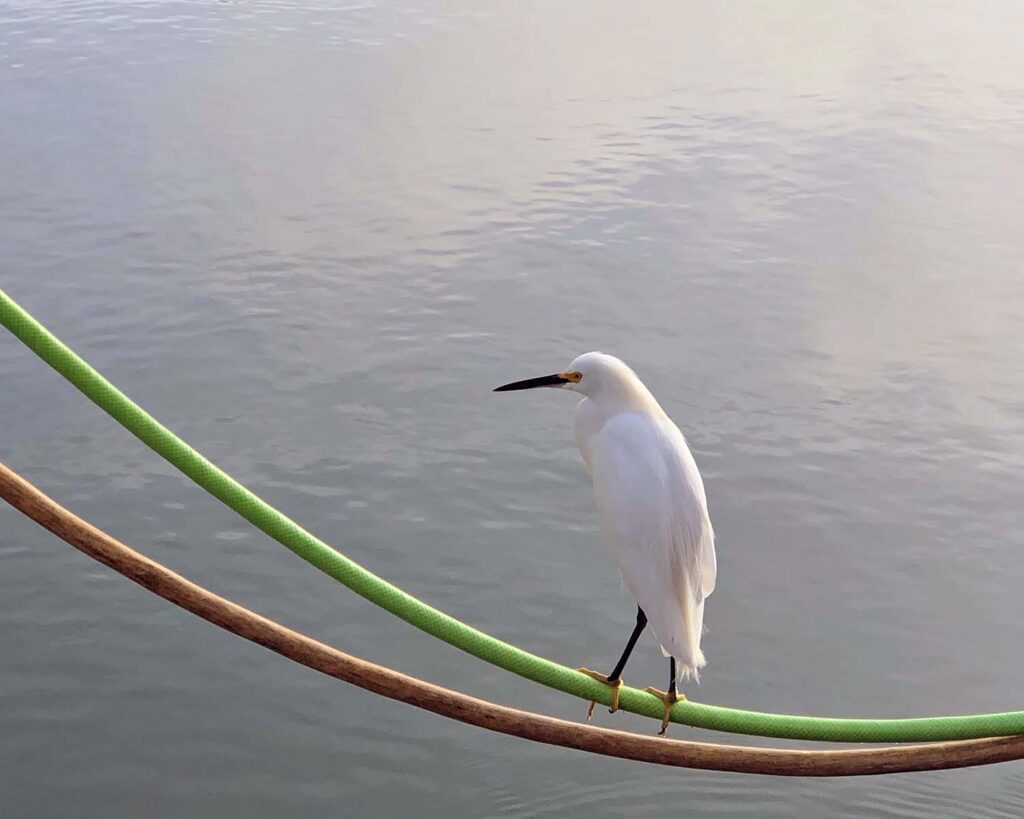
We saw this fella every morning at Clearwater – he came to say Goodbye.

What could be more perfect for Loopers?! 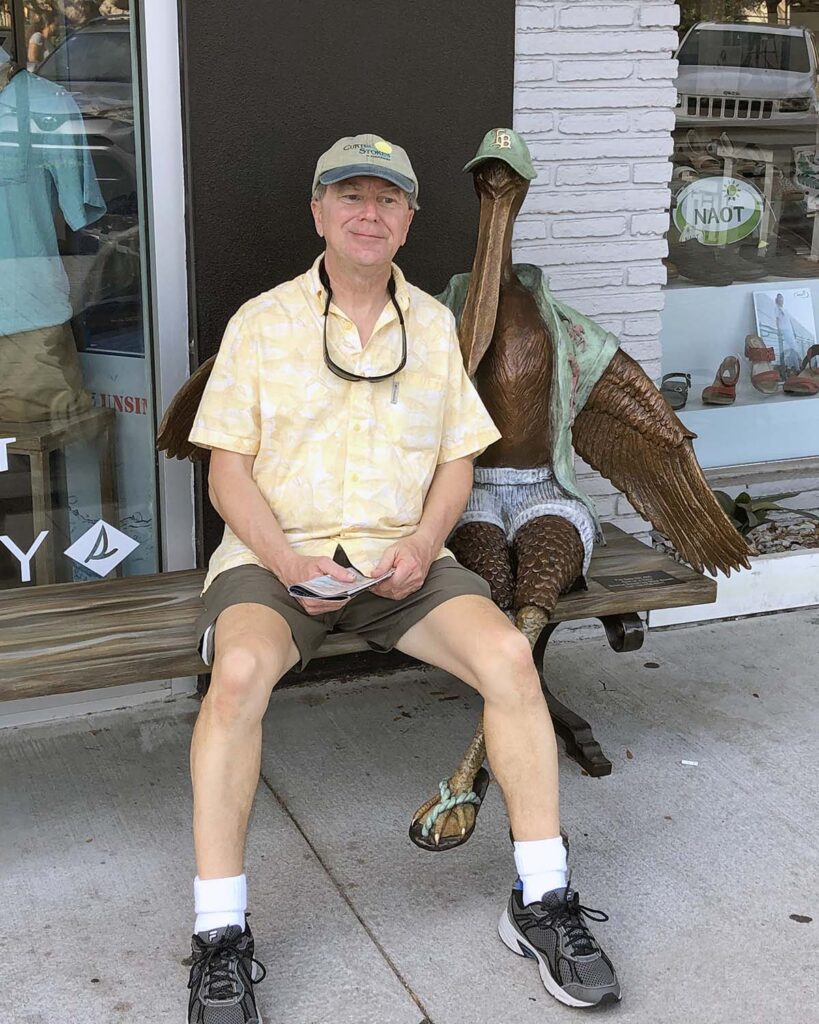
Ed found a new friend. 🙂
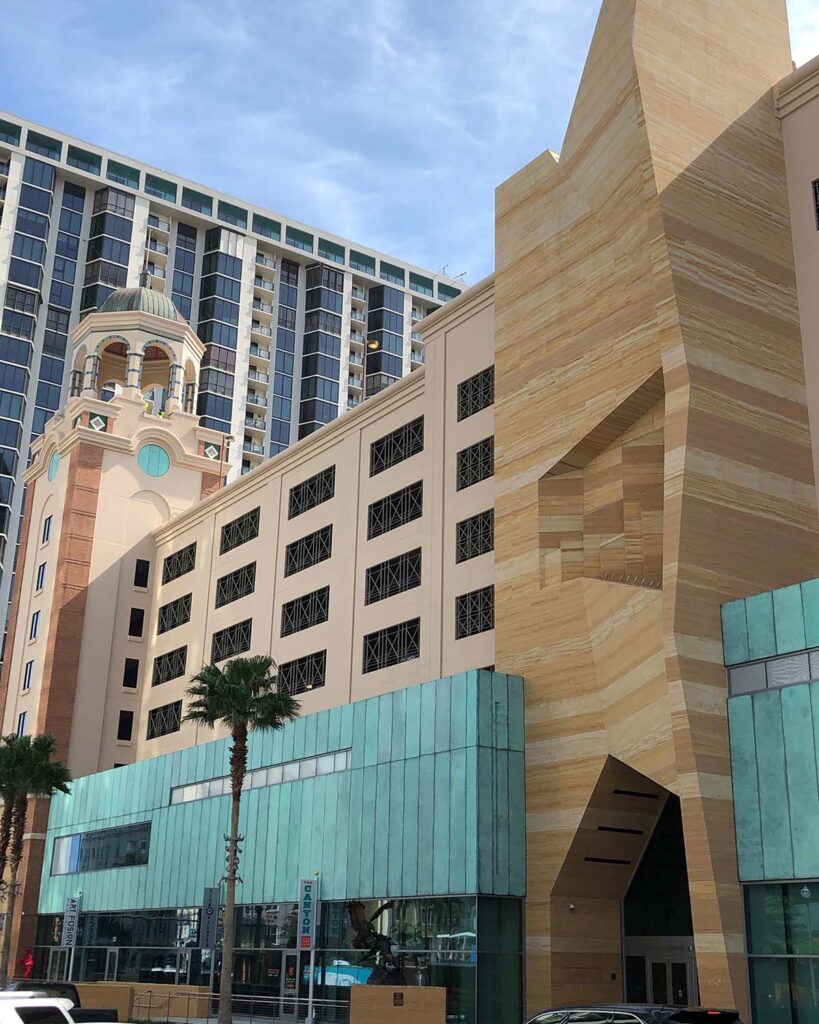
Some unique designed buildings in town.
We got off the trolley at the Vinoy Hotel, built in 1925, in the Mediterranean Revival architectural style. It was built as a seasonal hotel for the wealthy northern visitors, as well as Presidents and celebrities, who came south during the cold northern winters. The townspeople knew that “the season” had opened when they could see the Vinoy Tower lit at night. In 1942, during WWII, the hotel was used as an Army Air Force training center. It was sold and reopened as a hotel in 1944. It continued to prosper until the late 1960’s when it fell into disrepair due to neglect. It closed in 1974. In 1990, it was restored and expanded at a cost of $93 million. It’s beautiful today and is now a Renaissance Property. We enjoyed walking around the interior, which transports you to a different era of time. We also viewed a large photographic display of the history of the hotel. Outside, the grounds are lovely.
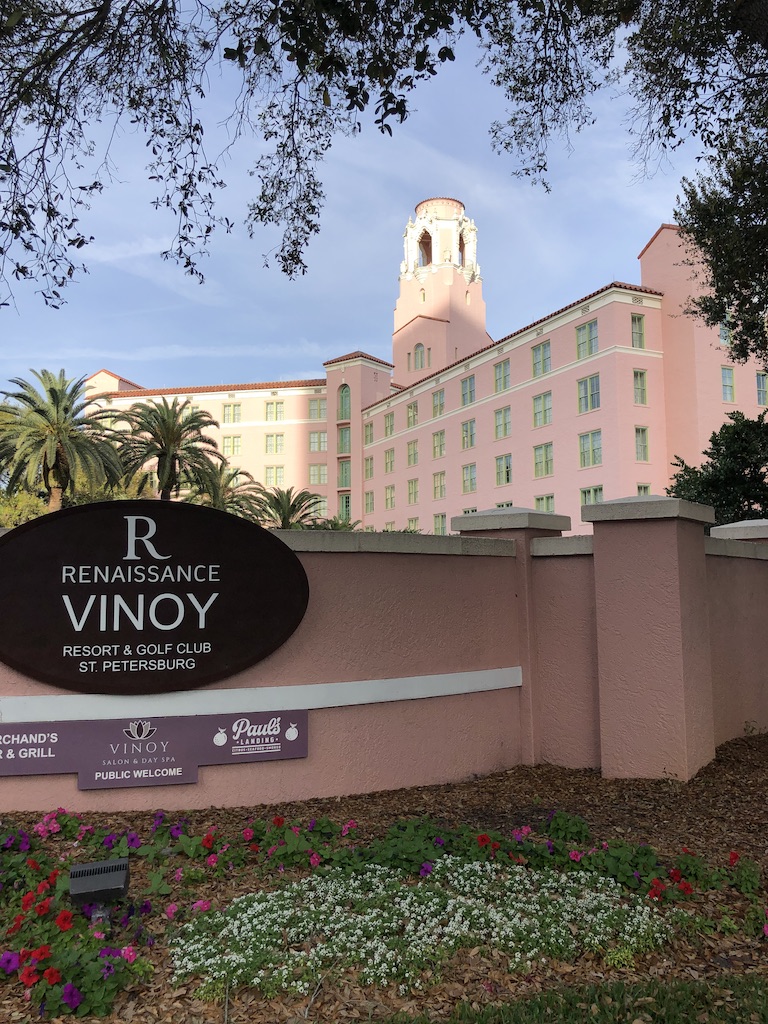
Tower view of the Vinoy.
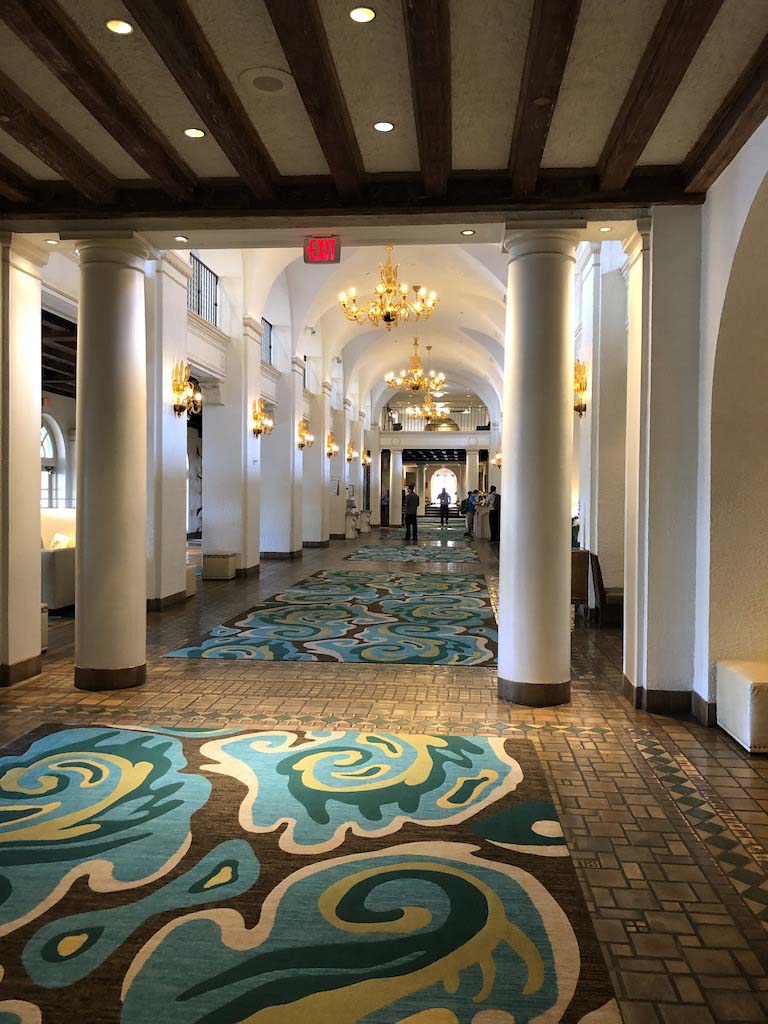
Vinoy interior. 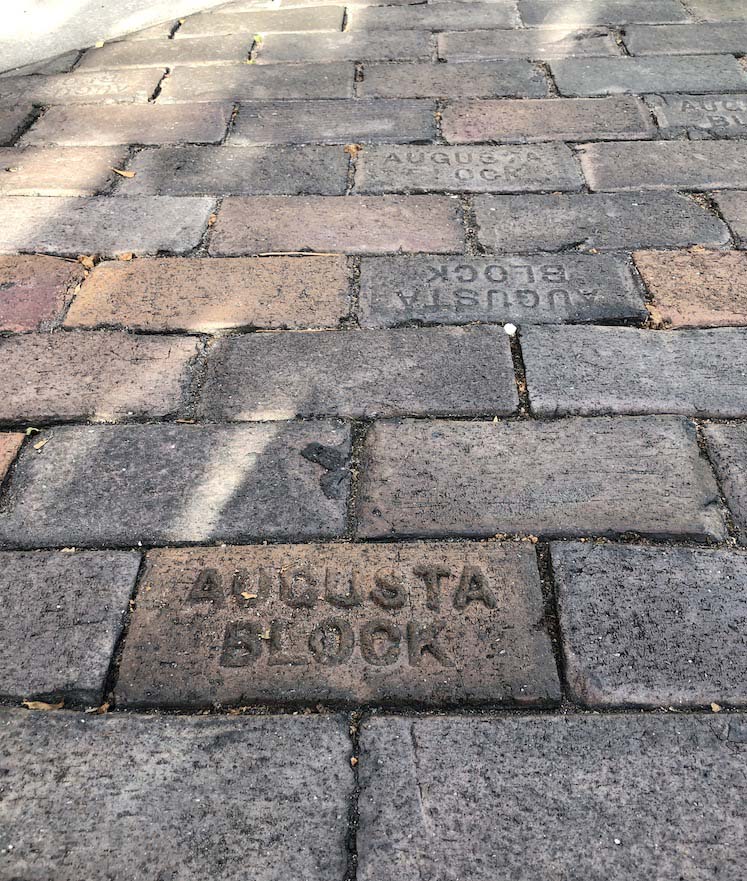
Guess where the driveway brick came from?
On the 12thwe hopped on the bicycles and rode over to the St. Petersburg Sunken Gardens, one of the oldest roadside tourists sites in the US. In 1903, George Turner, Sr purchased a few acres of land. Included was a small lake, which he drained; hence the “sunken” garden. Being an avid gardener, he began planting various types of plants and the “garden” grew and grew. So many people wanted to see it, that he started charging 5¢to walk through it. By 1935, he had walled in the garden and was charging 25¢. Additionally, he sold plants and fruits from the garden. In the 50’s and 60’s, it was one of Florida’s top tourist attractions. The Gardens were passed down to his sons and grandsons. The Gardens were sold to the City in 1999 for over $2 million. Included in the sale was a building known as the Sanitary Public Market. It has since been renovated and houses a children’s science museum and a gift store.
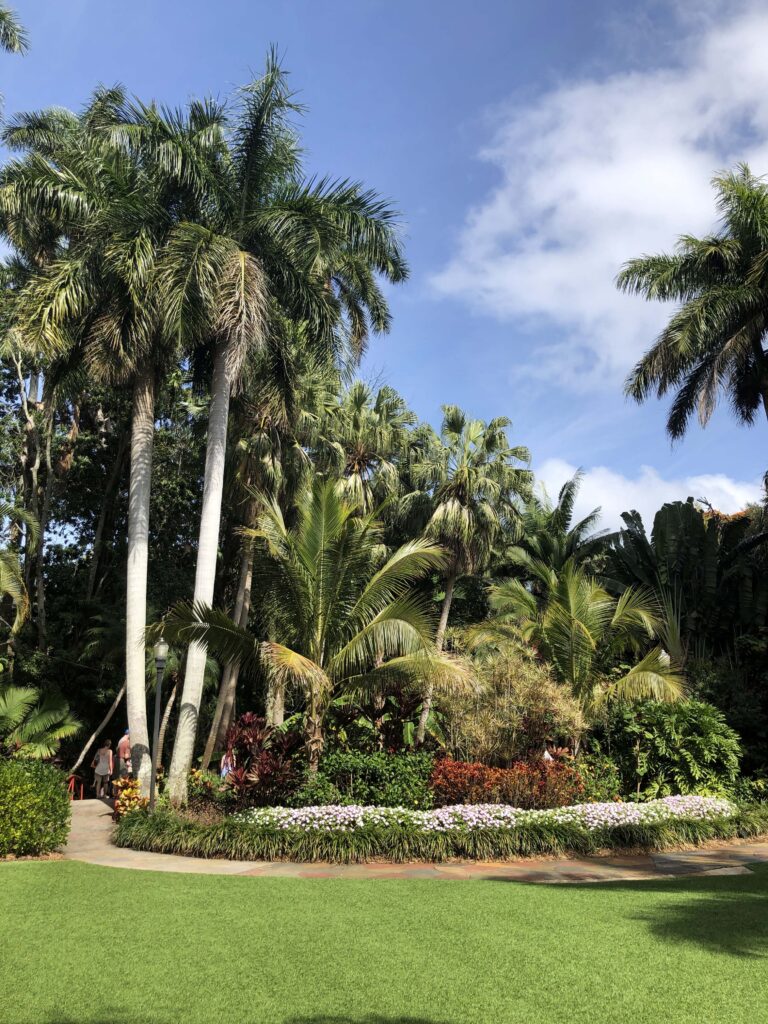
The grounds looked like they were “manicured.”
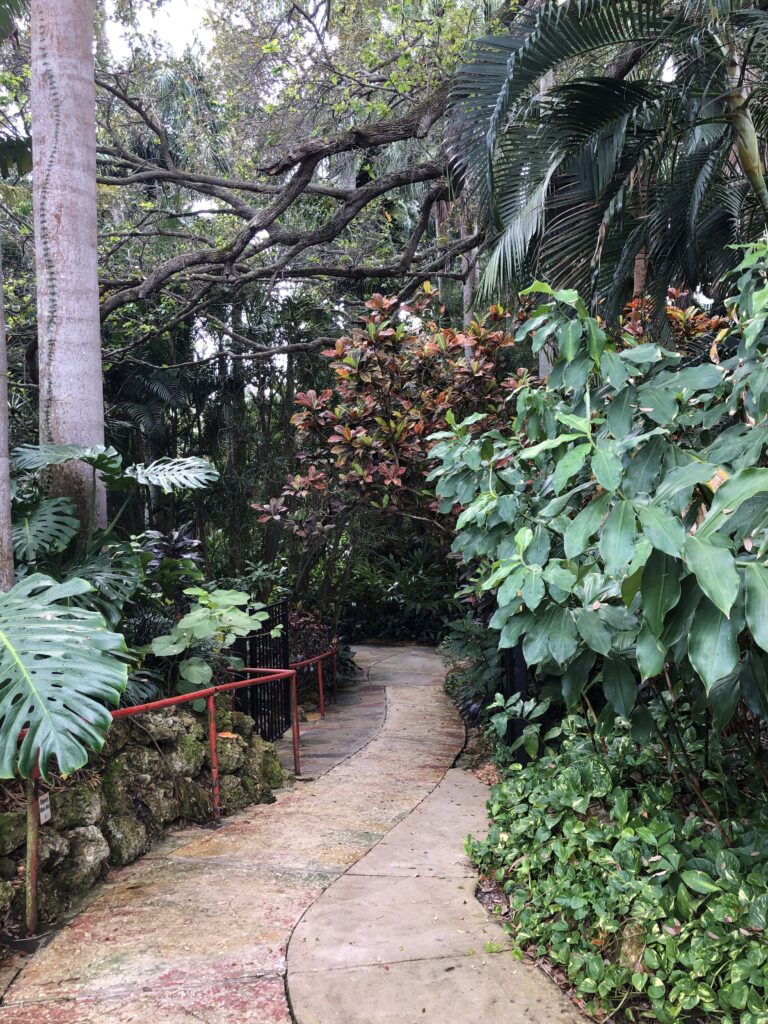
Walkway thru The Garden of Eden. 
Walls of bougainvillea!
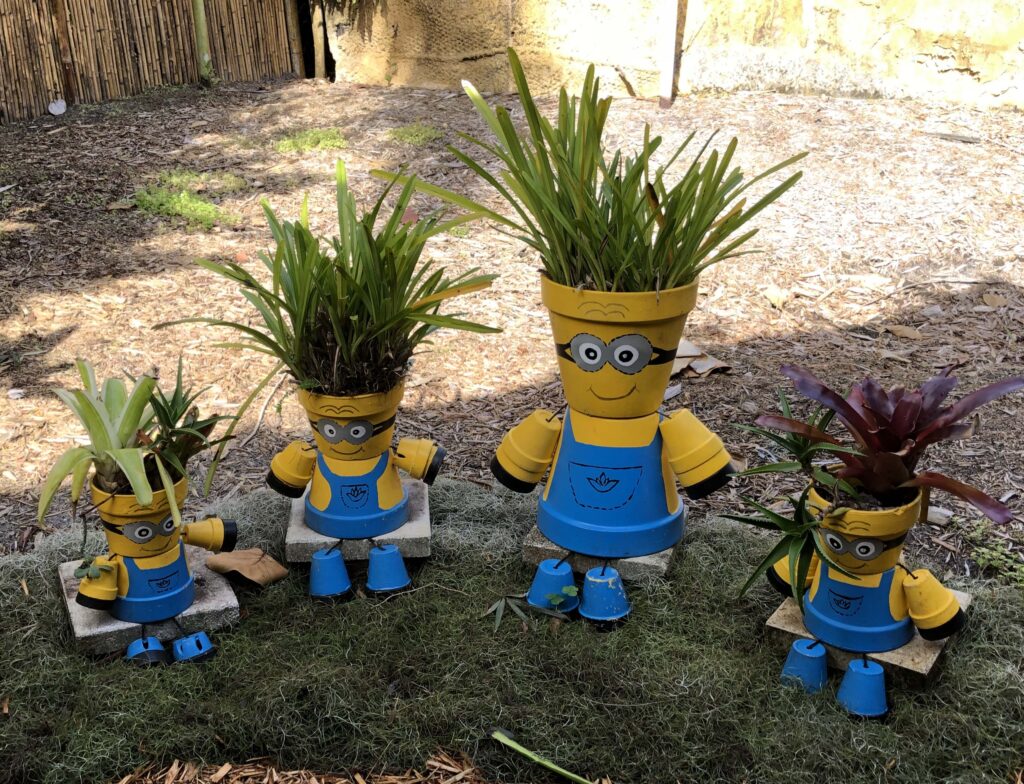
Happy Garden family.
The Gardens are SO beautiful and so well kept by the City. Not only are there lush plantings, there are also tropical birds, fish, flamingos, and butterflies. What a delightful way to spend a morning.

Flamingos really are PINK!

The koi are well fed! 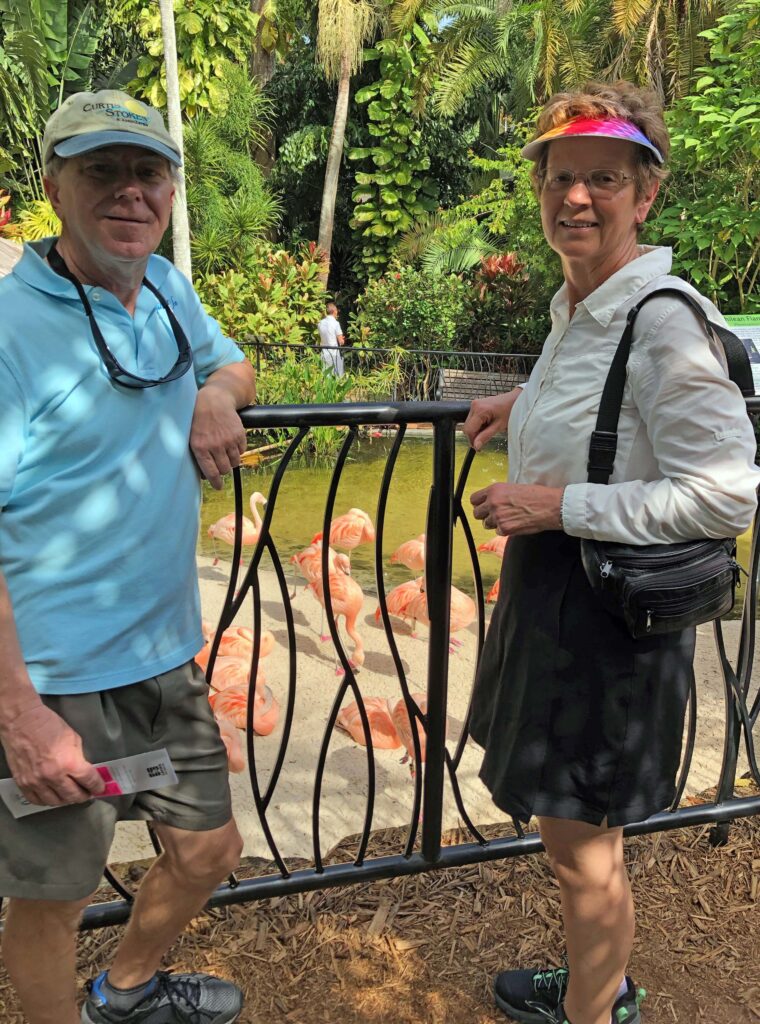
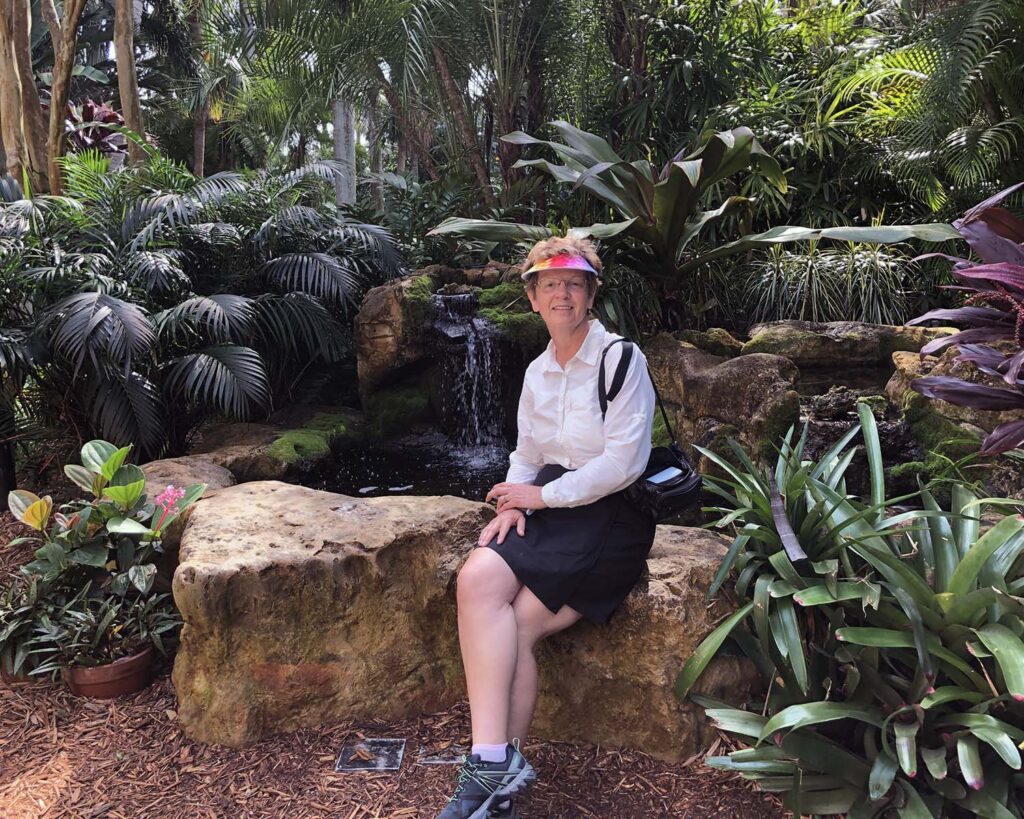
Such a place of peace.
In the afternoon, we headed to the Chihuly Collection Museum. We were familiar with Dale Chihuly glass from an exhibit we had visited at the Biltmore in NC. This museum had some films about the making of the glass, the design of the pieces, and an incredible display of some of his artworks. Most of the rooms had very dark wall colors, which made the colored glass really POP – so to speak! What a treat!
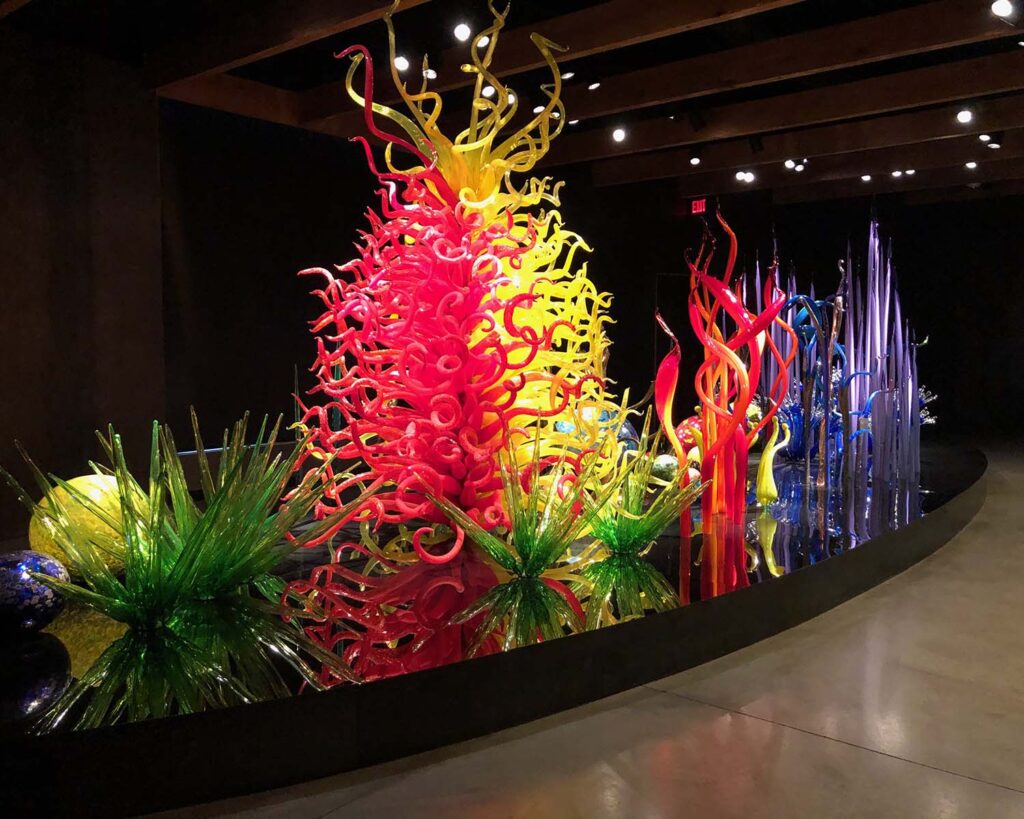
A “pond” of beautiful water plants.
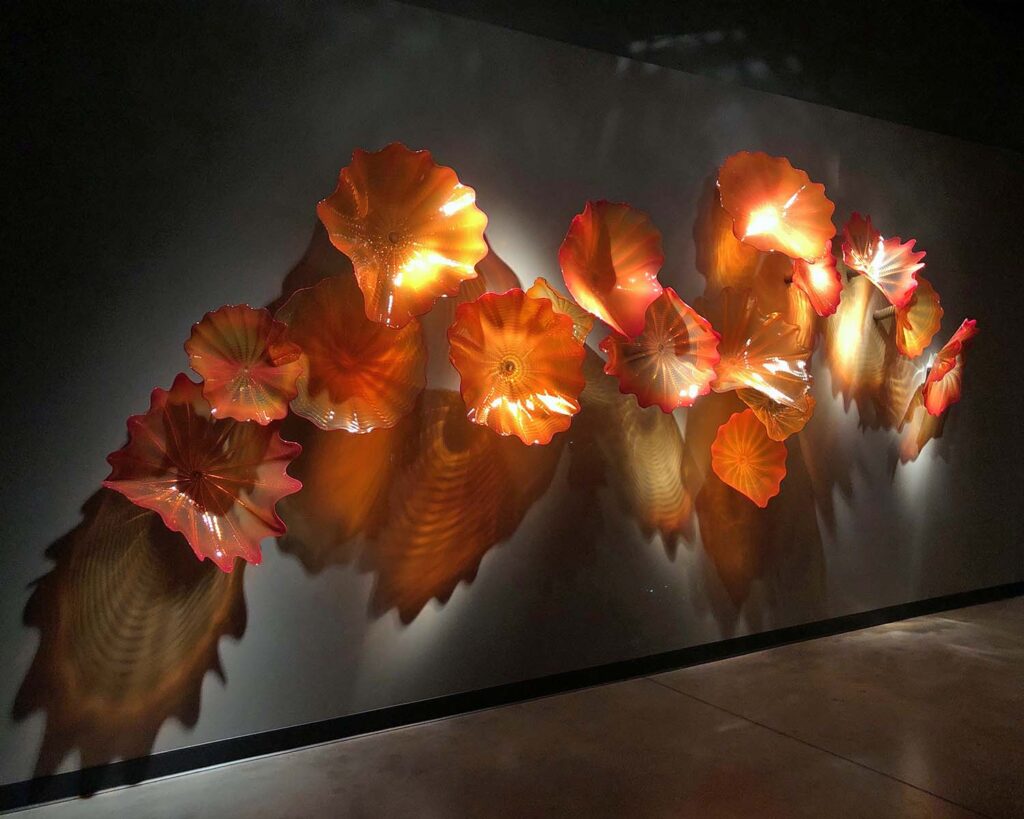
Title – “Sunset Persian Wall.”
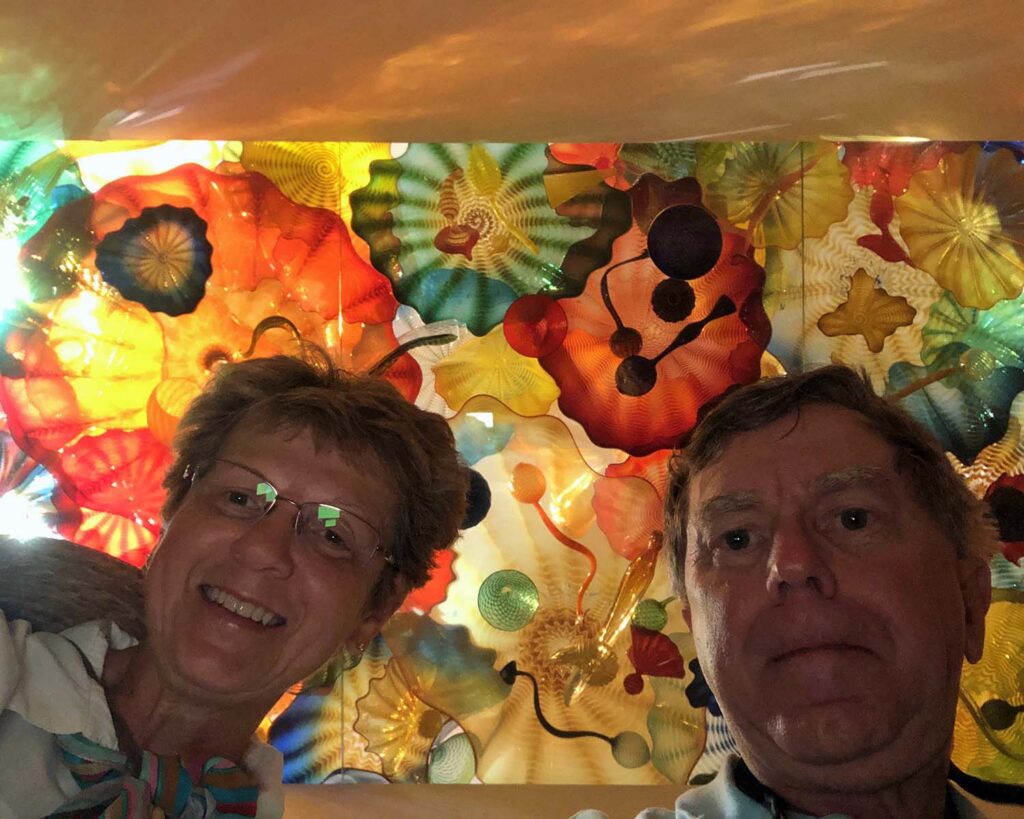
The camera is on the floor; lens is pointing UP to the ceiling.
Included in our ticket was a visit to the Morean Glass studio. There we saw a glass blowing demonstration by two of the local artists. We watched a hot “blob” turn into a beautiful glass plate over the course of about an hour. Fascinating!
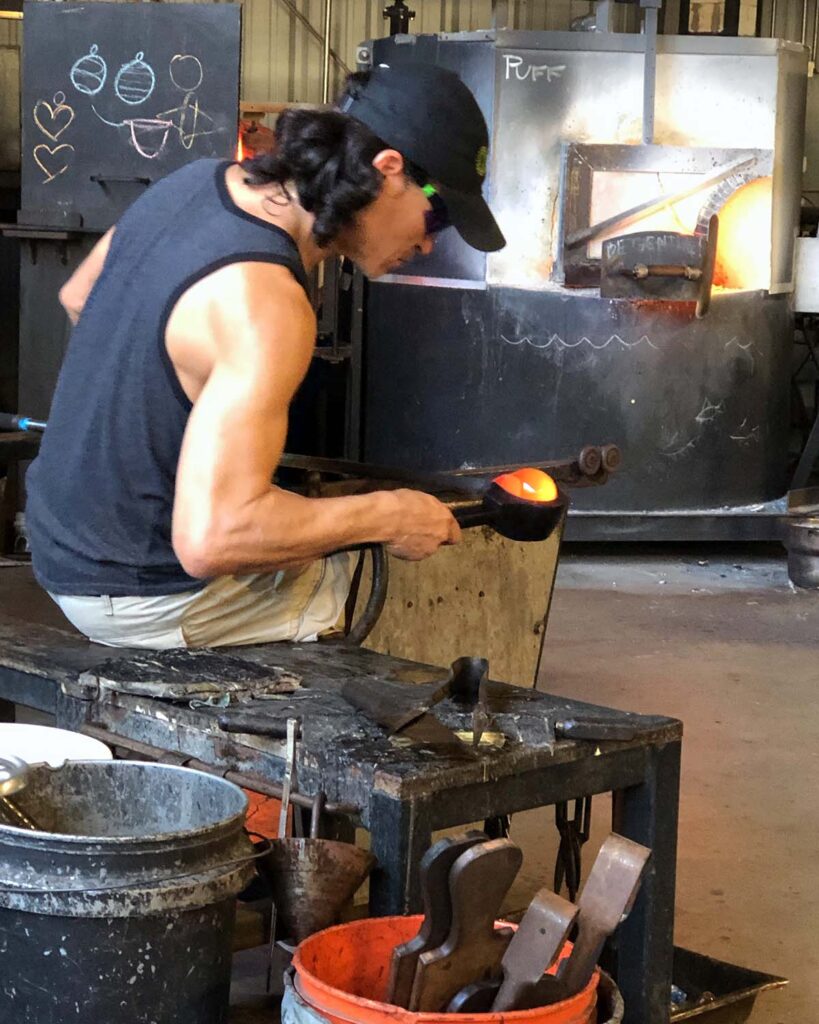
This hot “blob” turns into… 
… a blue decorative dish.

Ed told me to stand in front of this mural…. how sweet!
The next day we headed to the Florida Holocaust Museum. For those of you who have never been thru a Holocaust Museum, it is an emotional experience. There were many exhibits of what happened to people during the Nazi takeover; many stories told. At the end of the walk-thru of the museum is box car #113 069-5, an actual railroad box car from Poland which transported victims to the concentration camps. It sits upon original rail track from Treblinka.
A special exhibit was on display while we were there: Let Me Be Myself: The Life Story of Anne Frank. The display included photographs, models of the building where Anne and her family hid, and many excerpts from her writings. There was also available a Virtual Tour of the “Secret Annex” hiding place. As we experienced the “tour,” it could not have been more real to us. I’m sure that we were able to see much more detail of each of the rooms than most tourists are able to see when they tour the actual building.

Ed is taking the virtual tour of the Anne Frank secret annex.
